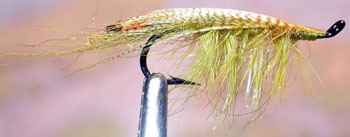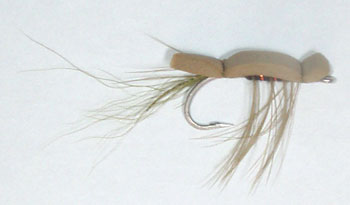| Grass Shrimp | |||||||||||||||||||||||||||||||||
 (General Practitioner variant) |
 Grass Shrimp (Palaemonetes pugio) |
||||||||||||||||||||||||||||||||
|
Notes
Time of Appearance: May through September. There are two basic inshore shrimp in the Moriches Bay the Grass Shrimp (Palaemonetes pugio) and the Sand Shrimp (Crangon septemspinosa). The grass shrimp is: A common member of the inshore fauna commonly found on docks, pilings and even boats that have allowed a growth of algae to form. This small shrimp prefers inshore waters and can be found in the brackish waters of salt marshes. It is distinguished from our other common shrimp, Crangon, by a long rostrum (nose-like appendage) and by possessing distinct claws. Crangon also tends to be found on the bottom although it does swarm at the surface near lights at night. Barnes, R.D., Invertebrate Zoology, 1980, Saunders College and Holt, Rinehart and Winston. The two shrimps can be represented with both patterns. Just be aware of where in the water column to present the fly. On many occasions I have seen grass shrimp carry eggs, spawn and move out into the bay. I have only seen sand shrimp a few times. For the last few seasons my logs show that there are shrimp movements about 4 days leading up to the full moon. How to fish these flies. Shrimp are around during spring, summer and early fall. Certainly when the shrimp are on the move would be a good time to use shrimp patterns around sod banks, for example. Use the deer hair fly for surface feeding or put a split shot to bring it down a bit. If the shrimp are lower, then try the wool shrimp. Be creative and add a foam float above the fly to bring it up. Nature is in flux and it is the observant fisherman who modifies to what nature throws at him—observe and imitate. I once observed two swans methodically feeding in a creek. They would rhythmically swoop their lengthy necks, plunging their heads under the water to pick at various underwater plants. All along, following the swans at a distance of twenty feet were about five gulls. With staccato movements, the gulls would peck at the surface of the water. I watched this for quite a while and had noticed the same dual-activity at other locations. What I realized was the swans rooting was stirring up grass shrimp that would then surface and the gulls would pick them up. Brilliant! I have seen swans fly on the darkest nights and feed out on the bay under the moon. My point being, where there are swans rooting, stripers won't be far. © 2005 by Mark Gustavson |
